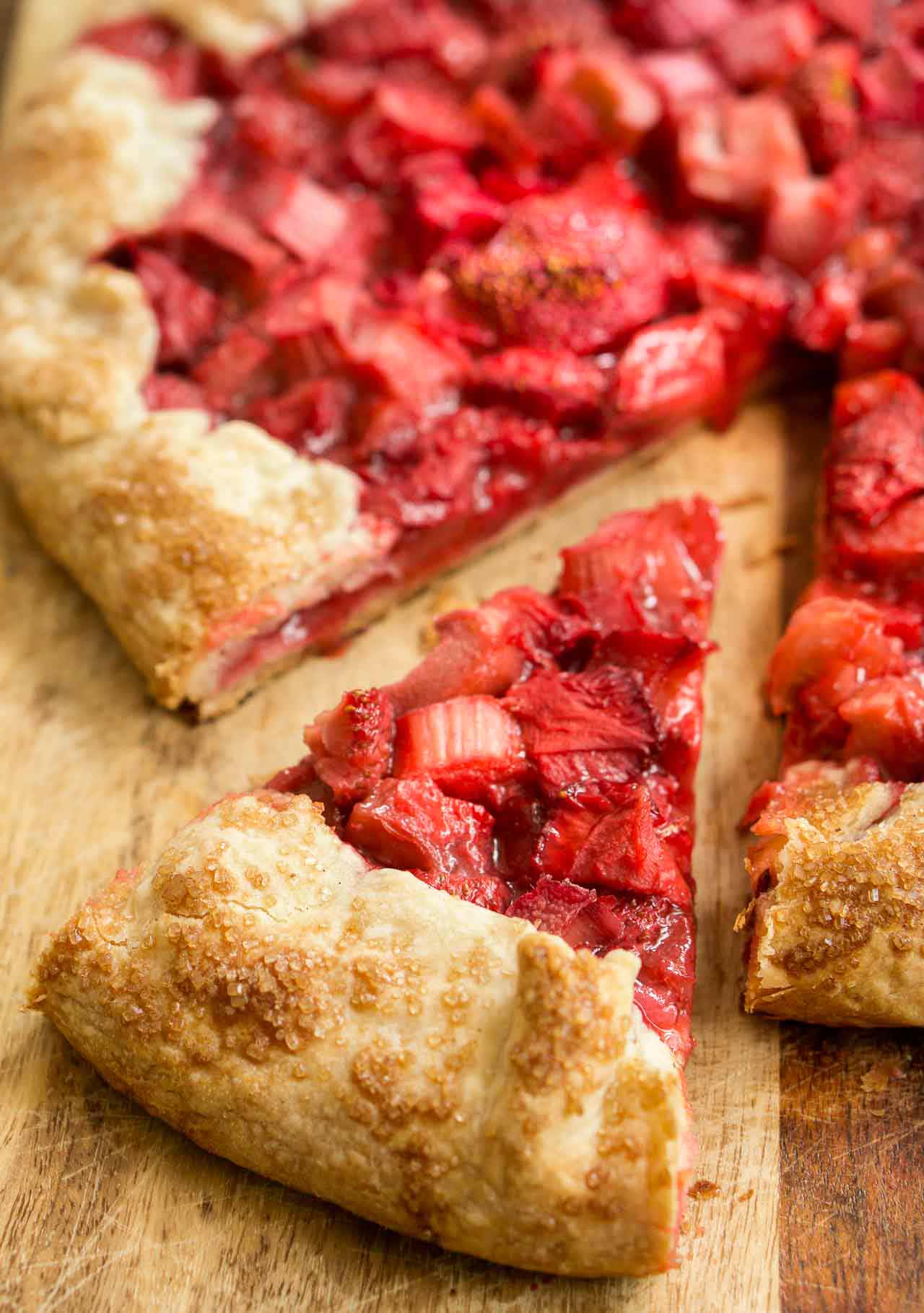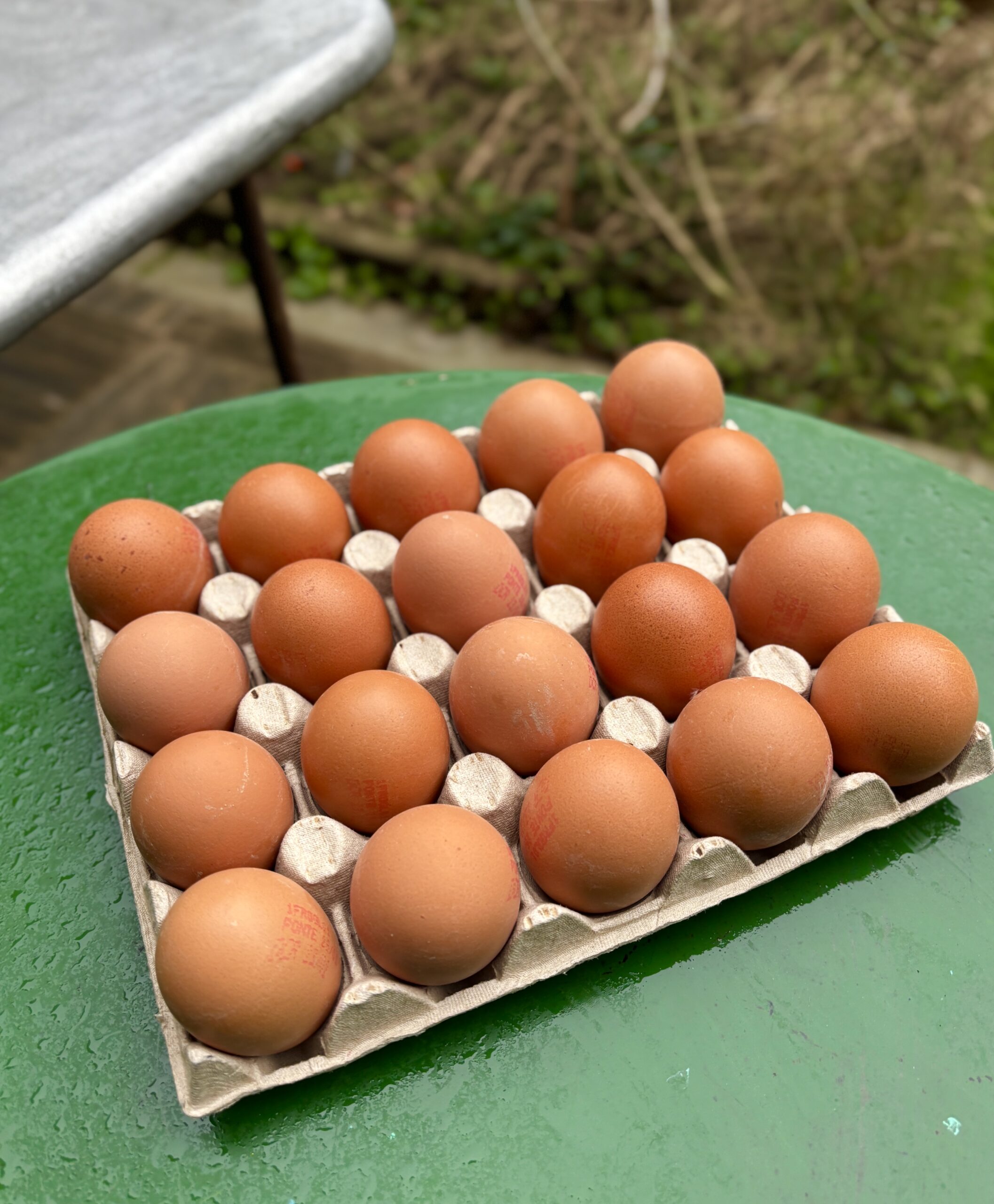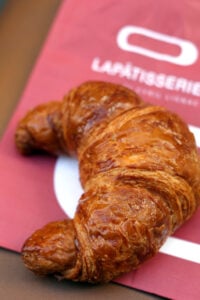Saucisse/Saucisson
An extraordinary tarte Tatin, the one I consider the best in Paris…
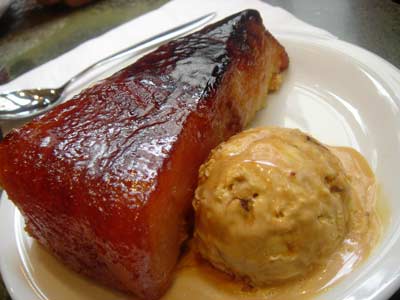
A clever ruse, and now that I’ve gotten your attention with something sweet and luscious, I decided I wanted to show how I got to the bottom of something that’s been bugging me all week: the difference between saucisse and saucisson.
So this morning I braved the biting cold and went to my local market with a real Frenchman, aka Romain, hoping to have him explain the difference between the two. And being 100% Parisian, I learned to set a few hours aside if I want something explained.
So bundled up in our wool coats, sweaters, long underwear (me), thermal shirts, gloves (him), a hat (him: I look funny in hats), mitten (me: my hands get cold, I don’t care how funny I look), and scarves (both), we wandered the market, first stopping at the stall with my favorite women from the Savoie, the mountainous region encompassing France and Switzerland, home to many of the finest sausages (and Comté cheese as well.) As we perused the piles of dried and fresh sausages, his explanation was this; “Saucisse is any little sausage, fresh or dried. Saucisse seche is the term used when it’s dried. Saucisson is any sausage that’s dried, but big.”
It all seemed a bit confusing, so I decided to ask a Parisian foodie Clotilde what was correct, someone who understands French ingredients but also has a fine understanding of American food as well as an excellent grasp of the English language.
Ok, so I didn’t actually ask her.
But instead checked out her useful Bloxicon of French-to-English food translations.
Her definition:
- Saucisson: dry sausage.
So I had confirmation that saucisson was dry sausage.
But what about saucisse seche?
What’s the dif?
Still grasping for knowledge (and a glass of Sancerre, which will come later) I checked my trusty Le Robert et Collins dictionnaire. You would think a volume that boasts 120,000 translations would have a bit more information about one of the most important and meatiest items in French cuisine.
Realizing perhaps that they’re treading on extremely thin ice, they offer these rather sketchy and non-committal responses:
- Saucisson: (slicing) sausage
- Saucisse: sausage
Patricia Wells, in The Food Lover’s Guide to Paris gets a bit more in-depth, although there’s a touch of confusion:
- Saucisson: Most often a large air-dried cured sausage, such as salami, eaten sliced as a cold cut; when fresh, usually called saucisson chaud
- Saucisse: Small fresh sausage
Wait a minute. When ‘fresh’ it’s called saucisson chaud (presumably when cooked), and saucisse if it’s small?
I know the truth is out there, but I needed to find it.
So I turned to a little volume that claims to be “An exhaustive compilation of terms from French gastronomy…”, The A-Z of French Food. I picked up a copy of this book years ago when I was at cooking school at Ecole Lenôtre and struggling with the subtle difference between Suprême de poulet and blanc de poulet and poitrine de poulet…
Geez, how many words for chicken breast does one language need?
Very informative, here’s what the The A-Z of French Food had to say:
- Saucisson: A large variety of sausage preparations of minced or chopped meats and organ meats, which are seasoned, cooked, or dried (often called saucisson sec. Saucisson is eaten sliced , and usually cold, as it is bought.
- Saucisse: The generic term for sausage (cooked, uncooked, or cured) which is served hot or re-heated, as opposed to saucisson which is generally eaten cold in slices.
So there you have it.
I hope that helps you next time you’re at the market in France and it’s your turn to order and the pressure’s on and everyone’s waiting for you to decide and madame behind you is not-so-gently pressing you forward and all you want to do is turn around and smack her upside the head which you can’t do (but boy, would that make you feel better.)
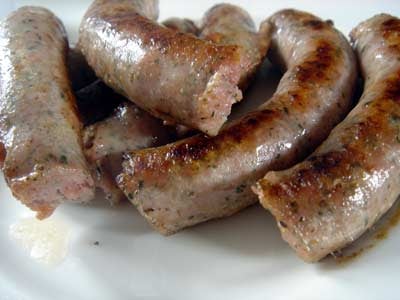
So now that we all completely and unequivocally understood the difference between the two (right?), I decided to reward myself with a nice Sunday lunch of chipolatas, highly-seasoned, meaty, and slender sausages, along with a few dozen fresh oysters.
(To be honest, by this point I was thoroughly confused and a bit terrified, so I let him do the ordering. But I did offer to stand guard and smack-down any ofles dames that tried to take cuts.)

Our next stop was for the oysters, and since we needed help making up our minds, the vendeuse was more than happy to pry open a few and let us pop them in our mouths. After much discussion (which always happens in France when there’s food involved) we chose 2 dozen No. 2 Huîtres de Normandie with the fresh, briny taste of the sea.
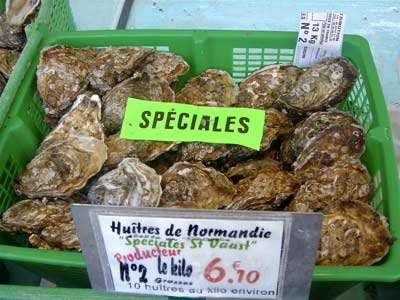
Once home, Romain expertly shucked the oysters while the chipolatas sizzled and the bottle of Sancerre, also chosen at the market (after the obligatory tasting), chilled quickly in the freezer (although with the freezing temperatures in Paris, the rooftop outside would have been faster.) The crusty baguette de pavot was sliced and each piece smeared with salted butter then I mixed up a simple sauce mignonette of white wine vinegar, cracked pepper, and lots of finely-chopped shallots.
And there we had it. A rather excellent Sunday lunch, my only consolation for another unsuccessful attempt at comprehending the nuances of the French language.
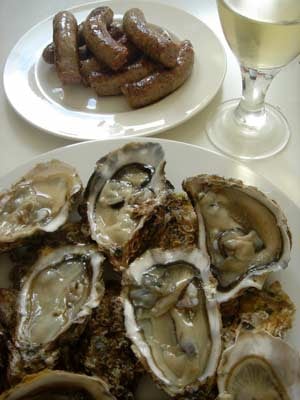
And the tarte Tatin?
Dessert from Berthillon, who I think makes the best tarte Tatin in Paris. An enormous wedge of caramelized apples resting on crisp pastry, served with a big, melting scoop of their amazing caramel ice cream alongside.
Now that’s something I have no trouble understanding…
Berthillon
31, rue de St. Louis-en-I’le
Tel: 01 43 54 31 61









